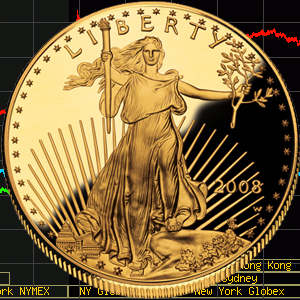 As the U.S. moves closer to a confrontation with Syria, gold rallied to back up over $1,415 an ounce Tuesday, a gain of almost 1.4%. Even though it dipped back below $1,400 Wednesday, the market is showing what a crisis like this can do for the price of the yellow metal.
As the U.S. moves closer to a confrontation with Syria, gold rallied to back up over $1,415 an ounce Tuesday, a gain of almost 1.4%. Even though it dipped back below $1,400 Wednesday, the market is showing what a crisis like this can do for the price of the yellow metal.
On Tuesday, Chintan Karnani, chief analyst at Insignia Consultants in New Delhi said, “The rise in gold prices is mainly due to safe-haven demand after Israel test-fired rockets in the Mediterranean Sea.” He went on to say, “There are concerns that there could be indirect forms of attack on Syria before the U.S. Congress [meets] next week.” Congress is expected to vote on the issue early next week when they return from their summer recess.
However, Jason Rotman, president of Lido Isle Advisors, feels that gold’s gains may be capped “at the recent high of $1,430 due to the ‘Septaper’ effect.” Mr. Rotman is referring to the Federal Reserve’s hinting at an imminent tapering of the billion-dollar bond-buying program in September. This may be the only thing applying negative pressure to gold though, because September is historically a booming month for the precious metal.
Strong buying signals from China, the start of wedding and festival season in India, and a looming military conflict are all reasons to be bullish on physical gold (coins). In addition, September is traditionally one of the worst months for the stock market which could add to the urgency investors are feeling about finding a safe-haven for their money.
To kick off the month, John Nyaradi of MarketWatch has a warning about September, “This September is likely to be particularly volatile as Federal Reserve Chairman [Ben] Bernanke deferred any new stimulative action until the two-day Fed meeting on September 17-18, which concludes with Dr. Bernanke’s new conference. This will be the most important event of the month as investors and market participants decide whether the outcome will be ‘to taper or not to taper.’ Other key events unfolding in September include the potential for military attacks on Syria and this Friday’s nonfarm payroll and unemployment report.
“Seasonality also points to a rocky ride ahead as Septembers are historically the worst performing month for the stock market…Beyond September, of course, comes the notorious month of October which is known for major stock market crashes…Based on historical performance for September and October, as well as current global political turmoil, it is easy to conclude that the next couple of months could be a wild ride, indeed.”

